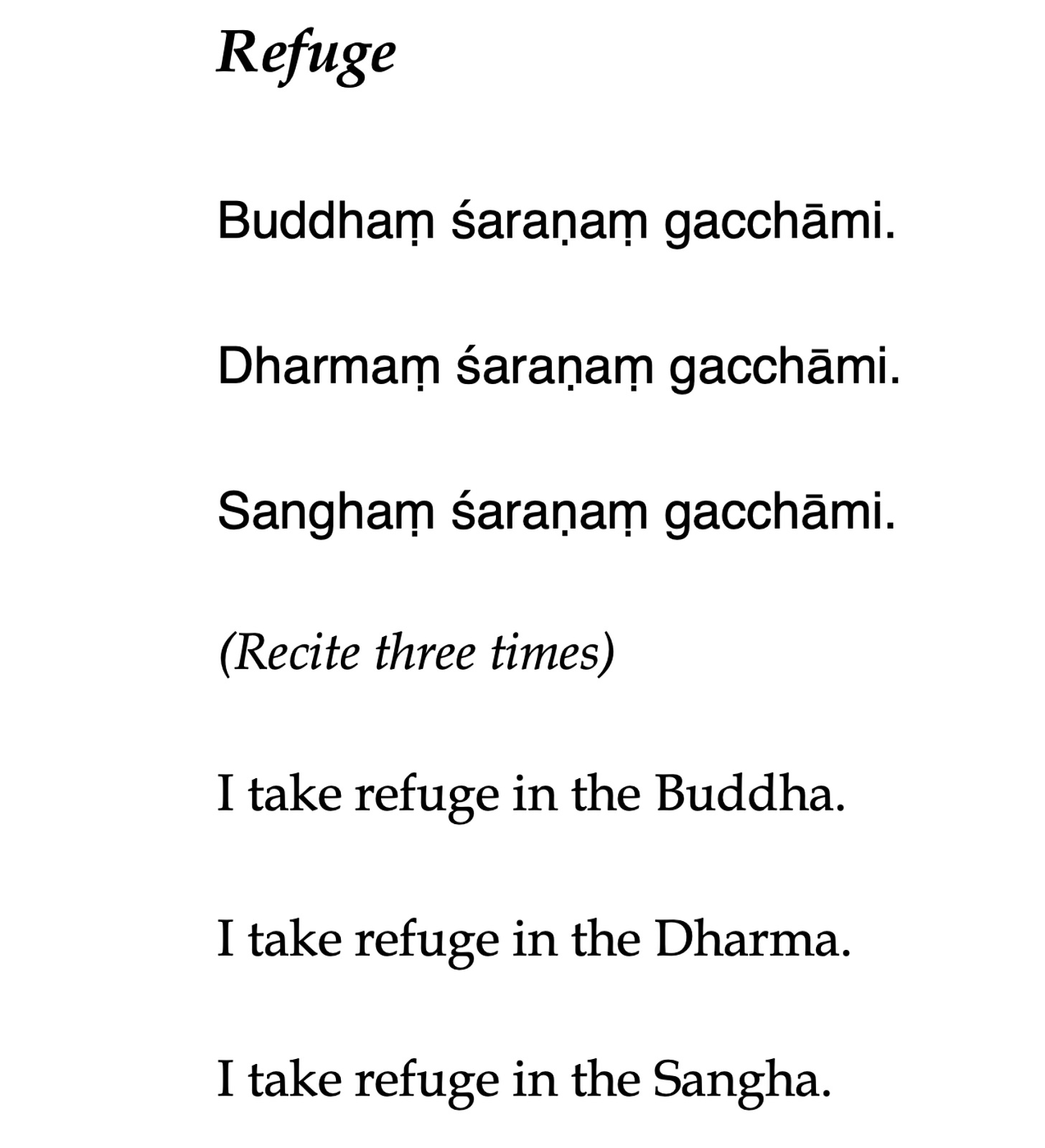The Buddha as Social Scientist
And why we now more than ever need a spiritual life like the dharma
Spiritual friendship, sangha, is half the spiritual path, said Ananda to the Buddha. No, the Buddha replied. Spiritual friendship is the whole way.1
You’ve probably heard or read that exchange before, including here. I thought of it today as I read an interview in The New York Times Magazine with Robert Putnam, best known as the author of the 2000 book Bowling Alone. The book documented how individuals in the United States had become much less involved in community activities (clubs, committees, bowling leagues, political parties, religious institutions, and so on). You can read the interview without a paywall here.
With a recently released book, The Upswing, and a new documentary about his work, Join or Die, Putnam, at 83, feels what he wrote 25 years ago is even more relevant today:
We’ve become more socially isolated, and we can see it in every facet in our lives. We can see it in the surgeon general’s talk about loneliness. He’s been talking recently about the psychological state of being lonely. Social isolation leads to lots of bad things. It’s bad for your health, but it’s really bad for the country, because people who are isolated, and especially young men who are isolated, are vulnerable to the appeals of some false community.
We’ve seen countless examples in the news of lonely young men performing acts of violence in the cause of a false community. As I prepare to release this post, the suspect in yesterday’s apparent assassination attempt on former President Donald Trump has been identified as a 20-year-old man. As more is learned about him, it’s safe to predict he’ll be recognized as a loner recently drawn in by anti-Trump rhetoric.
The “upswing” Putnam refers to in his new book title is aspirational, not historical:
We looked at long-run trends in connectedness, trends in loneliness, that sort of thing, over the last 125 years. And the short version is, it’s an upside-down U curve. We were socially isolated and distrustful in the early 1900s, but then there was a turning point, and then we had a long upswing from roughly 1900 or 1910 till roughly 1965, and that was the peak of our social capital. People were more trusting then, they were more connected then, they were more likely to be married then, they were more likely to join clubs then, etc. And then for the next 50 years, that trend turned around.
That same upside-down U curve applies to severe political polarization and economic inequality. We like to blame social media for these trends, but they’re part of a wave that began long before the invention of the “Like” button. I believe they are both symptoms and accelerants of the trends. So, what has caused the bulge in the upside-down U curve? Putnam gives a partial answer:
What stands upstream of all these other trends is morality, a sense that we’re all in this together and that we have obligations to other people. Now, suddenly, I’m no longer the social scientist, I’m a preacher. I’m trying to say, we’re not going to fix polarization, inequality, social isolation until, first of all, we start feeling we have an obligation to care for other people. And that’s not easy, so don’t ask me how to do that.
This leads us back to the Buddha, the Dharma, and the Sangha—a spiritual tradition that addresses the above. Like Putnam, I don’t know how to move people to a different mindset, but I wish they had more access to spiritual traditions that feel like home and not a house to visit once a week.
You may be far more familiar than me with other traditions that feel like home. I can only write knowledgeably about Buddhism and start with what is probably the faith’s most common prayer—taking refuge. Its basic form is called the “Pali Refuge” because it goes back to the first language in which the teachings of Buddhism were written. The prayer appears below2 in transliterated Pali and English. The Pali is usually chanted three times, then the English is spoken once.
My team of research assistants—I call them all by the same initials, A.I.—came up with this wording to explain “refuge” in Vajrayana Buddhism:
The term "refuge" refers to the act of seeking protection and guidance by committing oneself to the Three Jewels: the Buddha, the Dharma, and the Sangha.
That was a sloppy job, A.I. It implies that the Buddha, Dharma, and Sangha are outside us when Vajrayana Buddhism sees them with more nuance. And “refuge” is more than seeking protection and guidance. It’s finding a place of peace and safety. Buddhist scholar Pema Khandro describes refuge this way:
To know refuge is to realize that there is a goodness beyond petty concerns, neurosis, confusion, tension… To know refuge is to realize there is a way of being beyond convoluted logic, darkness, delusion hatred, betrayal or traumas…
This is what makes a Buddhist. We take refuge, therefore we resolve to live wakefully, to become a refuge for others.
Now, let's take the lines of the prayer one by one:
I take refuge in the Buddha.
If we’re new to Buddhism, we see in this reference only the man born Siddhartha Gautama more than 2,500 years ago, who, at age 35, reached Enlightenment by sitting under a bodhi tree and became the Buddha of our era. As our practice matures, especially in Vajrayana, we see the term “buddha” referring to all the buddhas of all time, including the Buddha Nature in each of us. Finally, we rely more and more on the Buddha within.
I take refuge in the Dharma.
The word has many meanings in Asian religions. In Buddhism, it refers primarily to the teachings of Buddha Gautama and the way the world works. Since the Buddha is said to have given 84,000 teachings, maybe it’s easier to take refuge in how the world works. That’s a facetious comment, of course, because the Buddha taught understanding how the world works so we learn how to reduce suffering. We are taking refuge in the Buddha’s teachings and our innate understanding of them.
I take refuge in the Sangha.
In Buddha’s time, I imagine the sangha was regarded as the bands of monks and nuns who followed the Buddha, as well as his lay students. Now, I interpret it as 1) the Zoom group I meditate with daily, 2) the groups I meditate with on retreats with my various teachers, 3) all students of my various teachers, 4) all Vajrayana practitioners, 5) all Buddhists, and 6) all sentient beings, because we all have innate Buddha Nature. We are all Buddhas. I find the closest spiritual friendships with the first two groups, but they are all part of what I might call the Greater Sangha.
Including the sangha as one of the Three Jewels of Buddhism shows how reverently we Buddhists regard the spiritual community. The Buddha himself called it the entire path. That’s one reason why the growth of Buddhism in the West might help Robert Putnam’s U curve swing north.
In his interview, Putnam talked about trust and ethics, so I’ll also mention the Pāramitās (“perfections” in Pali and Sanskrit). These are the qualities to practice for Enlightenment. They vary a bit in number and wording with different teachers and schools of Buddhism. Here’s one version. I’ve elaborated on a few of them for clarity.
Generosity in every sense of the word
Ethics, virtue, morality (including nonviolence)
Renunciation of worldly distractions
Wisdom
Joyful effort
Patient forbearance
Honesty
Determination
Loving kindness, goodwill
Equanimity, serenity
Joining a bowling league isn’t on the list—but if we all do our best to exemplify the perfections and, in our wisdom, recognize the interconnectedness of all things—we’ll live in a less lonely world.
If you have found this blog post helpful, whatever your religious path, please share it with your friends.
From the Pure Land is read by subscribers in 21 US states and seven countries.
Upaddha Sutta, Bhikkhu Bodi translation
This version is reproduced from the Dharmata Foundation Fellowship Guide.






Thank you Mel for your reflection. I agree that spiritual friendship is vital for wellbeing and growth. However I disagree with your interpretation of Sangha as kalyana mitra. The Sangha is traditionally defined as the company of Arahants, those who have fully awakened. Having experienced the very human dissolution of a spiritual community due to misconduct I have no interest to take Refuge in folks who may still be in delusion or on a guru trip. The Buddha of the Suttas also said it’s better to practice alone than in the company of fools. I see this equation of Sangha and kalyana mitra frequently and just can’t get behind it, and actually think it can be dangerous in a culture that still is integrating Buddhism. There have been too many instances of harm caused by cults and false gurus to casually equate these terms.
Thanks for these, Mel. I'm enjoying taking sips and absorbing the overall vibe and feeling of the path. I think Buddhism is what's calling me but haven't found an aspect of it that's clearly calling me. Coincident with your post, my Unitarian church has a Buddhism group I'm looking into. Also enjoyed the dance tune. I appreciate your service.